
The kimono is a traditional Japanese garment and the national dress of Japan. The kimono is a wrapped-front garment with square sleeves and a rectangular body, and is worn left side wrapped over right, unless the wearer is deceased. The kimono is traditionally worn with a broad sash, called an obi, and is commonly worn with accessories such as zōri sandals and tabi socks.

A T-shirt is a style of fabric shirt named after the T shape of its body and sleeves. Traditionally, it has short sleeves and a round neckline, known as a crew neck, which lacks a collar. T-shirts are generally made of stretchy, light, and inexpensive fabric and are easy to clean. The T-shirt evolved from undergarments used in the 19th century and, in the mid-20th century, transitioned from undergarments to general-use casual clothing. It is an intercultural staple of casual wear, worn by people of all genders.
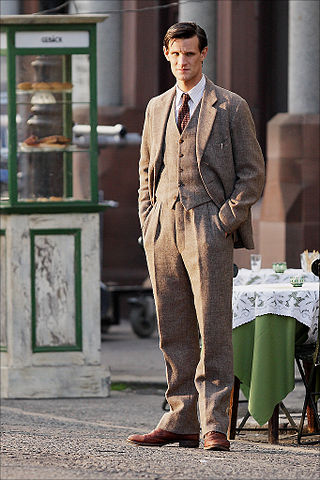
A suit, lounge suit, or business suit is a set of clothes comprising a suit jacket and trousers of identical textiles generally worn with a collared dress shirt, necktie, and dress shoes. A skirt suit is similar, but with a matching skirt instead of trousers. It is currently considered semi-formal wear or business wear in contemporary Western dress codes, however when the suit was originally developed it was considered an informal or more casual option compared to the prevailing clothing standards of aristocrats and businessmen. The lounge suit originated in 19th-century Britain as sportswear and British country clothing, which is why it was seen as more casual than citywear at that time, with the roots of the suit coming from early modern Western Europe formal court or military clothes. After replacing the black frock coat in the early 20th century as regular daywear, a sober one-coloured suit became known as a lounge suit.

A folk costume expresses a national identity through clothing or costume, which is usually associated with a specific region or period of time in history. It can also indicate social, marital, or religious status. The word "costume" is sometimes considered pejorative due to the multiple senses of the word, and in such cases "clothing", "garments" or "regalia" can be substituted without offense.

A kaftan or caftan is a variant of the robe or tunic. Originating in Asia, it has been worn by a number of cultures around the world for thousands of years. In Russian usage, kaftan instead refers to a style of men's long suit with tight sleeves.

A tunic is a garment for the body, usually simple in style, reaching from the shoulders to a length somewhere between the hips and the knees. The name derives from the Latin tunica, the basic garment worn by both men and women in Ancient Rome, which in turn was based on earlier Greek garments that covered wearers' waists.

African clothing is the traditional clothing worn by the people of Africa.
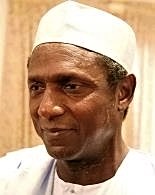
A kufi or kufi cap is a brimless, short, and rounded cap worn by men in many populations in North Africa, East Africa, West Africa, South Asia, and the Middle East. It is also worn by men throughout the African diaspora. The hat has strong associations with many Islamic cultures, as well as Pan-African pride. It is commonly called a "topi" or "tupi" in the Indian subcontinent. The kufi is similar to the kippah in Jewish culture.

Fashion in the years 1750–1775 in European countries and the colonial Americas was characterised by greater abundance, elaboration and intricacy in clothing designs, loved by the Rococo artistic trends of the period. The French and English styles of fashion were very different from one another. French style was defined by elaborate court dress, colourful and rich in decoration, worn by such iconic fashion figures as Marie Antoinette.
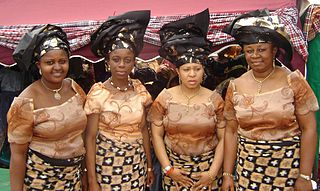
The wrapper, lappa, or pagne is a colorful garment widely worn in West Africa by both men and women. It has formal and informal versions and varies from simple draped clothing to fully tailored ensembles. The formality of the wrapper depends on the fabric used to create or design it.

Serbian traditional clothing, also called as Serbian national costume or Serbian dress, refers to the traditional clothing worn by Serbs living in Serbia, Croatia, Bosnia and Herzegovina, Montenegro, and the extended Serbian diaspora communities in Austria, Australia, Bulgaria, Canada, France, Germany, Greece, Hungary, North Macedonia, Romania, Russia, Slovenia, United States, etc. Like any traditional dress of a nation or culture, it has been lost to the advent of urbanization, industrialization, and the growing market of international clothing trends. The wide range of regional folk costumes show influence from historical Austrian, Hungarian, German, Italian, and Ottoman Turkish presence. Nonetheless, the costumes are still a pinnacle part of Serbian folk culture. From the 19th century and onwards, Serbs have adopted western-styled clothing. This change has started in larger settlements such as cities and towns, although it was not uncommon to see rural women in traditional working costumes all the way until the end of 1970s. Today, these national costumes are only worn by some elderly in rural areas but are most often worn with connection to special events and celebrations, mostly at ethnic festivals, religious and national holidays, weddings, tourist attractions, and by dancing groups who dance the traditional Serbian kolo, or circle dance.

Aso oke hat, known as fila in the Yoruba language, is a soft hat traditionally worn by the Yoruba people of Western Africa. It is made of hand-woven aso oke fabric, cotton, velvet, or damask. They are usually lined with cotton, but can be unlined if crafted to be worn for a single event.
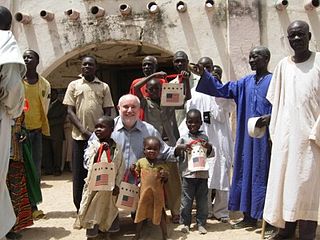
A Senegalese kaftan is a pullover men's robe with long bell sleeves. In the Wolof language, this robe is called a mbubb or xaftaan and in French it is called a boubou. The Senegalese caftan is an ankle length garment. It is worn with matching drawstring pants called tubay in Wolof. Normally made of cotton brocade, lace, or synthetic fabrics, these robes are common throughout West Africa. A kaftan and matching pants is called a kaftan suit. The kaftan suit can be worn with a kufi cap. Senegalese kaftans are formal wear in all West African countries. In the United States, some merchants sell this robe as a Senegalese style dashiki pant set or a full length dashiki pant set. Men who are members of the Hausa tribe, wear these kaftans to formal events like naming ceremonies and weddings. In the United States, a kaftan is one of three formal suits, equivalent to the tuxedo, that African-American grooms select for their weddings. The other styles being the dashiki pant set, and the grand boubou, pronounced gran boo-boo. There are various other formal robes that are worn throughout West Africa, and with the exception of the Yoruba Gbarie robe, pronounced barry, most of these are a form of Islamic dress, see sartorial hijab. The kaftan is worn by Christians, African Jews, Muslims, and followers of African traditional religion. Furthermore, Senegalese kaftans are common among men of African descent in the African diaspora. The Senegalese kaftan is men's attire. In West Africa, and the United States, this robe is not worn by women. The women's robe is called a kaftan.

The Taqiyah, also known as tagiyah or araqchin, is a short, rounded skullcap. It is similar to the kufi, another cap culturally worn by many Muslim men and many populations in North Africa, East Africa, West Africa, South Asia, and the Middle East.
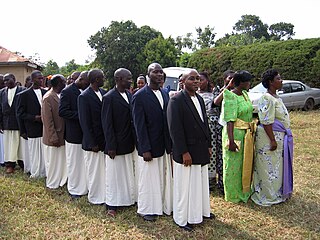
A kanzu is a white or cream coloured robe worn by men in the African Great Lakes region. It is referred to as a tunic in English, and as the Thawb in Arab countries. The kanzu is an ankle or floor length garment. It serves as the national costume of Tanzania as well as the Comoros, where it is called/pronounced 'Kandu' as well as thawb. The robe is also worn in some coastal Muslim regions of Tanzania and Kenya. The men of Uganda consider it their most important dress. Kanzu is a Ganda word of Swahili origin, which means "robe" or "tunic". In Tanzania, the term is used interchangeably with kaftan.

Traditional clothing is one of the factors that has differentiated this nation from neighboring countries, dating back as far as the Illyrian era.
Sindhi clothing are a part of the Sindhi culture. Sindhi women and men wear the Shalwar Qameez or the Kurta with Pyjama. Women also wear sari or ghagra. However, before the adoption of the Shalwar kameez and the kurta, the sari as well as other articles of clothing, Sindhis had their own traditional costumes.

The boubou or grand boubou is a flowing wide-sleeved robe worn across West Africa, and to a lesser extent in North Africa, related to the dashiki suit.

The fashion industry in Nigeria plays an important cultural role and contributes significantly to the country's economy. Clothing incorporates a variety of colours, fabrics, and embellishments. Many of the component cultures of Nigeria wear styles that are characteristic of their tribal society and customs. Nigeria produces fashionable textiles and finished garments and has designers who have achieved international recognition.

Tanling ruqun, also known as Tan collar ruqun and U-collar ruqun, is a type of Hanfu which was developed under the influence of Hufu ; it is a form a kind of ruqun which typically consists of three parts, featuring a low-cut low-cut U-shaped collar upper inner garment with long sleeves, a U-shaped collar banbi upper outer garment with short sleeves, a long high-waisted skirt. It can also be adorned with a shawl, called pipo. It was a popular form of clothing attire in the Sui and Tang dynasty. In the 21st century, the Tanling ruqun re-appeared as a result of the Hanfu movement. The 21st century Tanling ruqun was developed by reproducing the original patterns of the historical tanling ruqun while being aligned with modern aesthetics.



















